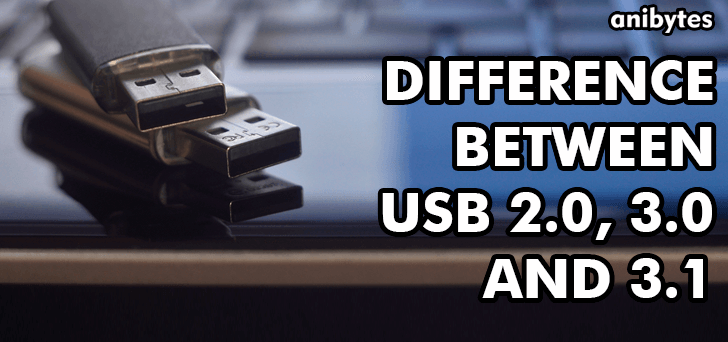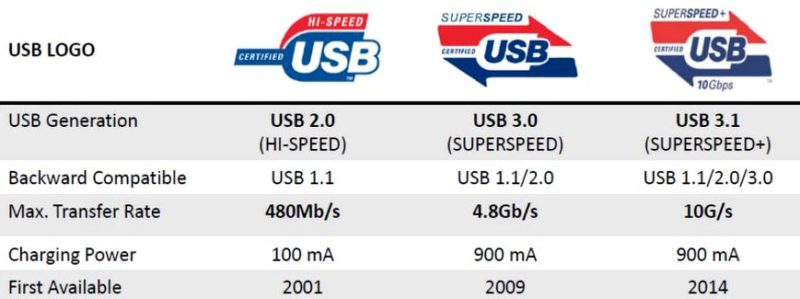
When you see the specification when buying new laptops you might have observed the USB ports. Some new PCs have USB 2.0 ports, but many also have USB 3.0. I’m confident that USB 3.0 is a newer and faster version of USB 2.0 but recently some PCs come with USB 3.1 ports. I assume that USB 3.1 is in turn also better than USB 3.0. In this article, we will see the difference between USB 2.0, 3.0 and 3.1. Share this article if this helps you.
Difference between USB 2.0, 3.0 and 3.1 :
USB 2.0, 3.0 and 3.1 aren’t physical ports, they are methods of transmitting data and delivering power. Each is faster than its predecessor. USB 2.0 offers theoretical speeds of up to 480Mbps, USB 3.0 up to 5Gbps (or about 10 times faster than USB 2.0), and USB 3.1 up to 10Gbps.
Anyone of these can be delivered over one of several connector shapes. The commonest by far is USB Type-a, which is the flat, rectangular plug-and-socket combination that most of us know as USB. You might also recognize Type-b because this squarer port is sometimes fitted to printers. USB 3.0 Type-a plug and sockets tend to have a blue plastic insert, but this is only a recommendation of the specification, not a requirement. Then there’s Type-c: the newest, smallest version that also adds convenience because the connection is reversible (so you can plug it in either way up). This is now commonly referred to as USB 3.1 but, accurately, it’s a USB Type-c socket that can deliver either USB 3.0 or 3.1 speeds and more power.

So, what do you think? Share their post if this helps you. Feel free to discuss your thoughts in the comments and don’t forget to subscribe us. 🙂